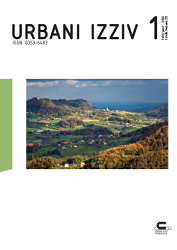Assessing cultural ecosystem service potential for green infrastructure planning in a peri-urban landscape: An expert-based matrix approach
Assessing cultural ecosystem service potential for green infrastructure planning in a peri-urban landscape: An expert-based matrix approach
Author(s): Vita ŽlenderSubject(s): Energy and Environmental Studies, Policy, planning, forecast and speculation, Human Ecology, Rural and urban sociology, Political Ecology, Environmental interactions
Published by: Urbanistični inštitut Republike Slovenije
Keywords: peri-urban landscape; spatial planning; ecosystem services; green infrastructure; matrix;
Summary/Abstract: With the encroachment of urban areas into peri-urban landscapes, the requirement for effective green infrastructure (GI) planning has become increasingly important for maintaining ecological integrity and human wellbeing. An expert-based matrix approach is proposed as a method for evaluating the potential of cultural ecosystem services (CES) in making informed GI planning decisions in a peri-urban landscape. Experts from various disciplines and areas of work were consulted to systematically evaluate various types of land-use and land-cover classes, as well as protection regimes characteristic of a peri-urban landscape across the CES categories. In addition to CES provision potential, experts also evaluated the possible potential to cause cultural ecosystem disservices. These scores are aggregated to generate spatially explicit maps that highlight areas with high CES provision potential and those with the potential to cause disservices. This approach was then applied to three case study areas, demonstrating its effectiveness in identifying priority areas for GI planning and management interventions. The results highlight the importance of integrating CES considerations into GI planning processes to enhance landscape resilience, social wellbeing, and cultural heritage preservation in dynamic peri-urban environments. Using scoring, validation exercises, and spatially explicit presentation on case studies, the utility and applicability of the expert-based matrix approach as a valuable tool for sustainable GI planning on a landscape scale is demonstrated.
Journal: Urbani izziv
- Issue Year: 35/2024
- Issue No: 1
- Page Range: 168-183
- Page Count: 16
- Language: English

